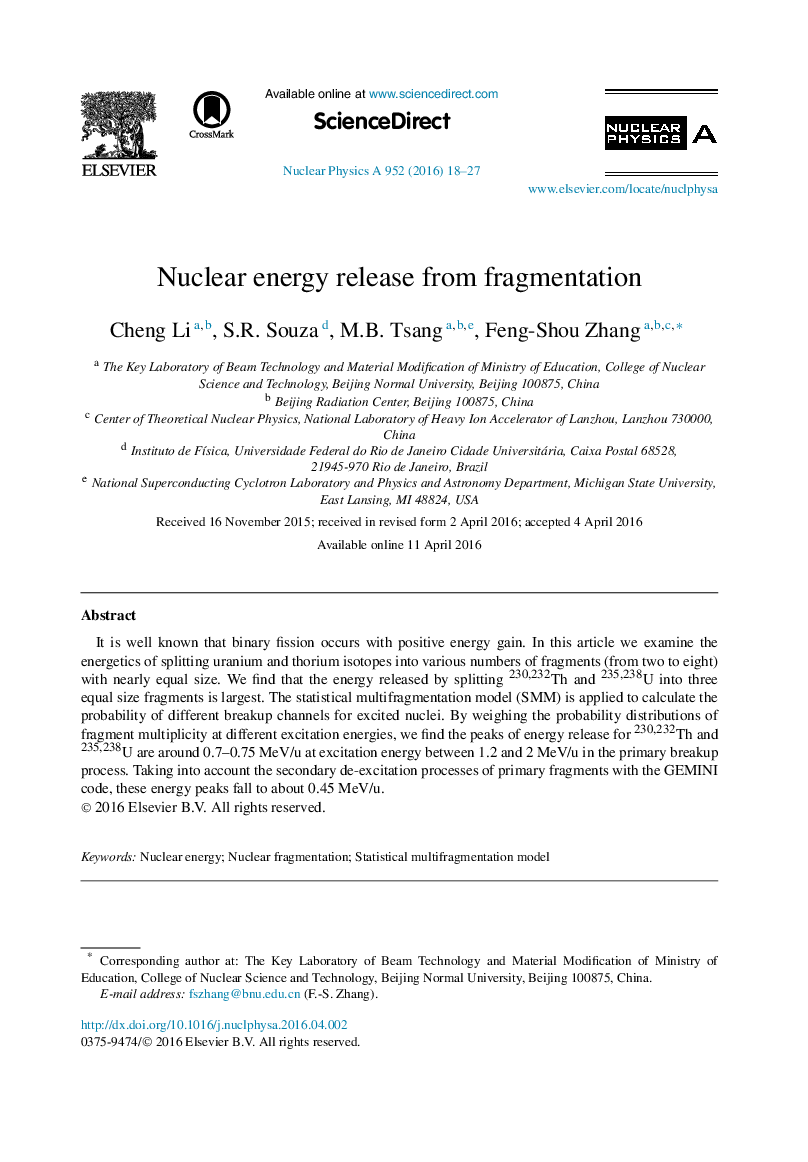| Article ID | Journal | Published Year | Pages | File Type |
|---|---|---|---|---|
| 1835992 | Nuclear Physics A | 2016 | 10 Pages |
It is well known that binary fission occurs with positive energy gain. In this article we examine the energetics of splitting uranium and thorium isotopes into various numbers of fragments (from two to eight) with nearly equal size. We find that the energy released by splitting 230,232Th and 235,238U into three equal size fragments is largest. The statistical multifragmentation model (SMM) is applied to calculate the probability of different breakup channels for excited nuclei. By weighing the probability distributions of fragment multiplicity at different excitation energies, we find the peaks of energy release for 230,232Th and 235,238U are around 0.7–0.75 MeV/u at excitation energy between 1.2 and 2 MeV/u in the primary breakup process. Taking into account the secondary de-excitation processes of primary fragments with the GEMINI code, these energy peaks fall to about 0.45 MeV/u.
